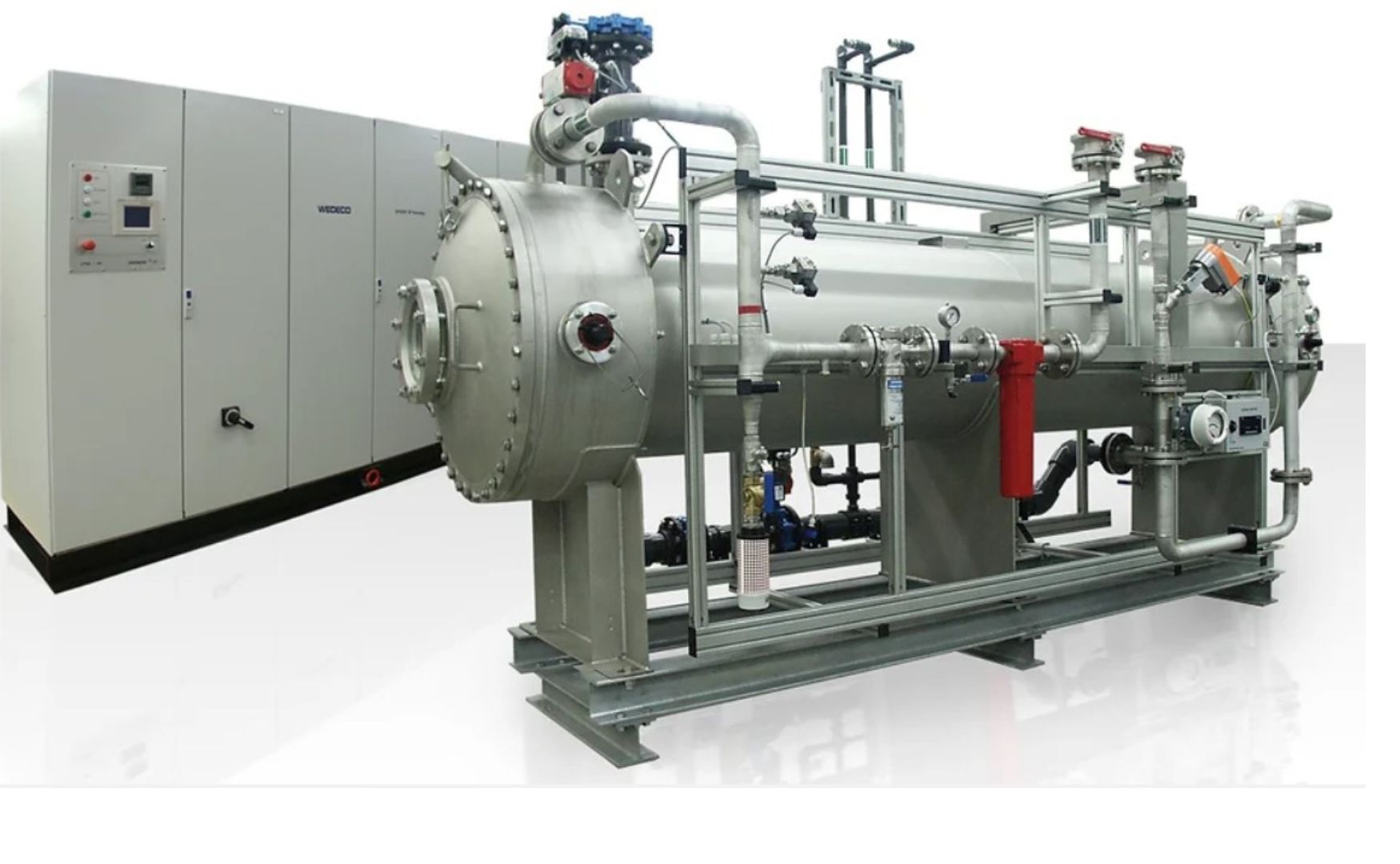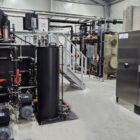The ozone oxidation is a highly effective process for water and wastewater treatment based on the strong oxidizing power of ozone (O₃). It is used in industrial water treatment to break down organic and inorganic contaminants, remove micropollutants and meet disinfection requirements. Ozone is one of the strongest known oxidizing agents and enables reactions that cannot be achieved with other chemical methods.
This article provides a detailed and professional explanation of the chemical principles, applications, technical challenges and practical examples of ozone oxidation.
Table of contents
Chemical principles of ozone oxidation
Properties of ozone
Ozone (O₃) is a highly reactive gas consisting of three oxygen atoms. It is produced by the excitation of oxygen molecules (O₂) through electrical discharge or UV radiation.
- Oxidation potential: +2.07 V (higher than that of chlorine or hydrogen peroxide).
- Reactivity: Attacks organic and inorganic molecules directly or via radical formation.
- Instability: Decomposes quickly to oxygen (O₂), leaving no residue.
Reaction mechanisms of ozone oxidation
Ozone can react in two ways:
Direct oxidation:
- Ozone reacts directly with impurities and oxidizes them into harmless products such as water, carbon dioxide or inorganic salts.
Indirect oxidation via radicals:
- Ozone decomposes in aqueous solution to form hydroxyl radicals (-OH), which have an even stronger oxidizing power.
Applications of ozone oxidation in water technology
1. decomposition of organic pollutants
Ozone is ideal for breaking down organic compounds such as pesticides, pharmaceutical residues, phenols and polycyclic aromatic hydrocarbons (PAHs).
- Advantages:
- Effective removal of substances that are difficult to break down.
- No formation of chlorine by-products.
2. removal of micropollutants
In wastewater treatment, ozone is particularly effective in removing micropollutants such as hormones, antibiotics and other pharmaceutical residues.
- Mechanism:
- Splitting of complex molecules into simpler, biodegradable compounds.
3. color and odor reduction
Ozone oxidizes coloured and odour-active molecules in industrial wastewater.
- Examples:
- Removal of dyes from textile wastewater.
- Elimination of odors in food processing.
4. disinfection
Ozone is used for disinfection in drinking water and waste water systems.
- Advantages over chlorine:
- Kills a wider range of microorganisms.
- No formation of chlorine-containing by-products such as trihalomethanes (THMs).
5. oxidation of metals and inorganics
Iron and manganese:
- Ozone oxidizes these metals to insoluble oxides, which can then be removed by filtration.
Ammonium oxidation:
- Ozone oxidizes ammonium (NH₄⁺) to nitrate (NO₃-).

Photo: Our reactor for wet-chemical oxidation ALMA BHU UXI using ozone or according to Fenton
Technical components and process design
1. ozone generation
Ozone is produced on site by ozonizers, as it is unstable and cannot be transported.
Procedure:
- Corona discharge: High-voltage discharge splits oxygen molecules (O₂) and forms ozone (O₃).
- UV radiation: Photochemical splitting of oxygen molecules.
Oxygen sources:
- Pure oxygen (higher efficiency).
- Ambient air (cheaper, but lower ozone concentration).
2. entry methods
The ozone produced is introduced into the water to be treated:
- Diffusers: Blow ozone as a gas through the water.
- Venturi injectors: Mix gas and water in a single flow.
- Contact reactors: Optimize the contact time between ozone and water for maximum efficiency.
3. reaction vessel
Specially designed reactors ensure sufficient contact times and maximize oxidation.
4. exhaust gas treatment
Excess ozone in the exhaust gas is converted into oxygen by thermal or catalytic decomposition to minimize environmental impact.
The challenges of ozone oxidation
1. energy demand
Ozone generation by corona discharge is energy-intensive and contributes significantly to operating costs.
2. material resistance
Ozone is highly reactive and requires ozone-resistant materials such as stainless steel (V4A), PTFE or special plastics.
3. formation of by-products
Unwanted by-products such as bromate (BrO₃-) can be formed during oxidation, especially in water containing bromide.
- Solution: Optimization of dosing and reaction conditions.
Conclusion
Ozone oxidation is a versatile and efficient process for water and wastewater treatment. Thanks to its high oxidizing power and environmental friendliness, it is ideal for the treatment of complex pollutants and disinfection. Challenges such as energy requirements and the formation of by-products can be overcome thanks to advanced technologies and optimized operating parameters. With continuous further development, ozone oxidation will play a central role in sustainable water management.
For further information on our products, please feel free to contact us at any time!








